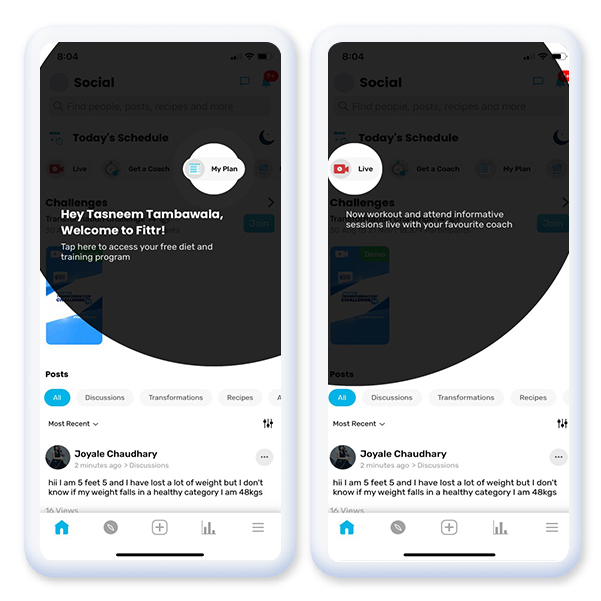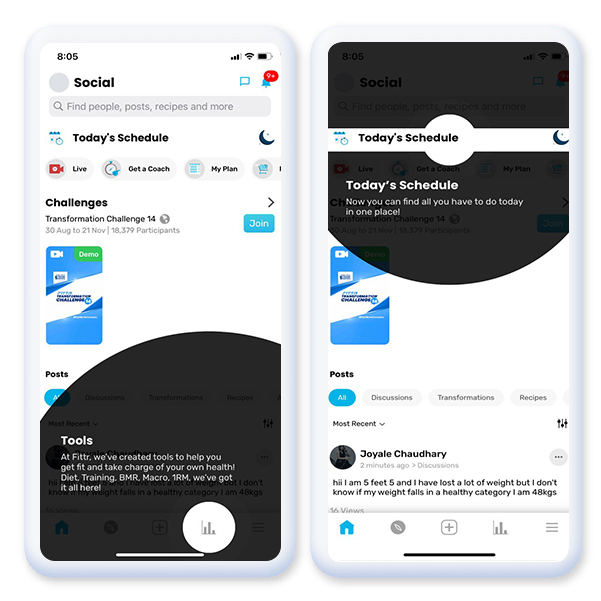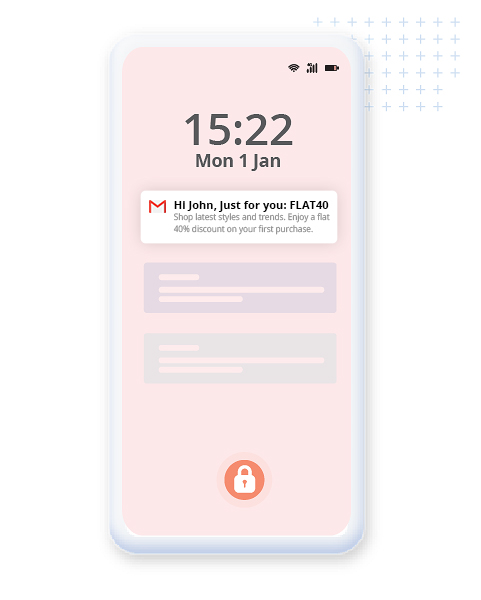The metrics related to digital products tell us a lot about how users perceive them. One such highly reliable metric is user retention.
User retention is becoming an increasingly reliable KPI to measure product growth and success.
Almost 70% of app users churn by the 90-day mark, and in recent years mobile app abandonment has only increased. 25% of mobile app users open an app once and then abandon it altogether. These stats show the poor retention rates prevalent in the market.
Even after understanding the importance of retention, brands often focus on “acquiring” more users. While the acquisition is essential, retaining your users is easier and much more cost-effective.
We will walk you through some practical strategies businesses have used to improve user retention.
What is user retention?
User retention is one of the critical stages in the user journey. User retention helps brands by
- Measuring growth in terms of how many users are engaged within the app;
- Helping understand the number of users that are receiving consistent value from the app;
- Helping identify the number of times a user is returning to your app which you can measure on a daily, weekly, or monthly basis.
For this, it is essential to keep your users engaged, informed, and delighted at all levels of their journey within the app.
A good product design, valuable features, the correct user acquisition tactics, and the value delivered to users at each touchpoint within the product decide how many users will return to your app.
Why is user retention necessary?
44% of companies focus more on customer acquisition vs. 18% that focus on retention. It has been proved that simply improving your user retention efforts by 5% can boost profitability by 75%.
It is much easier to convince existing customers to make a purchase. The probability of convincing existing customers to retain is between 60-70%. This is much higher than the 5-20% chance you have of selling to new users.
This is why brands need to shift their focus from acquisition to retention.
What are the three phases of user retention?
1. Onboarding:
The onboarding phase, where users get their first impression of your app and brand, is critical for any product. But what makes onboarding so important?
Onboarding is your opportunity to help new users experience your app’s unique value as soon as possible.
If you fail at this stage, there’s very little you can do to make up for it in the upcoming stages.
The techniques you implement in the onboarding stage will have a far more significant impact on overall retention compared to anything else.
- Make sure you are not asking for unnecessary information and increasing the number of steps for users before they realize your offerings’ value.
- Don’t make onboarding feel like an entire process.
- Help users by starting with smaller wins.
Duolingo, the popular language-learning app, is the perfect example here. It applies all the three points mentioned above, makes its onboarding feel like a quick experience, and offers a win at its end.
2. Activation
The second phase of retention is about activating and getting your users to sign up with your app.
Let’s continue with the example of Duolingo here. The team at Duolingo found that delaying the sign-up for users and simply allowing them to try out a few lessons first could boost the number of daily active users by 20%.
Instead of forcing its users to sign up, Duolingo allowed them to develop a taste for the app, delay the signup process until they hit a milestone, and only then ask for a signup.
3. Habit-forming engagement
While the first two stages focus on onboarding and activation, the final stage of user retention relates to building a great product experience by understanding behavioral psychology.
A successful onboarding will not translate automatically into nurturing user habits.
This is where you create new habits for users around the app. After a point, your users shouldn’t need a reminder to use it. They’ll keep coming back all on their own.
To continue with the Duolingo example, the team experimented extensively with the concept of “streak” to nurture users after onboarding.
By introducing streak, Duolingo was rewarding users for persistence. So rewarding users for specific actions/behaviors and nudging them to repeat those actions help you get your users hooked to the app. At this rate, users start feeling invested and try not to break this streak.
I’m personally on a 20-day streak right now, taking baby steps.
Eight user retention strategies product managers must consider
1. Prioritize app onboarding
A poor/complex onboarding flow that makes it difficult for users to discover and use high-value features results in users dropping off.
So, it becomes vital to help new users understand your app’s unique value proposition during onboarding. A few ways to do that effectively are:
- Implement contextual user flows using product walkthroughs: Guide users on setting up their accounts – signing up, filling in profile details, setting preferences (like language), and more.
- Get users to perform core actions: Ideally, the core function of a fantasy gaming app is for users to play the first game/joining the first contest. Similarly, for a healthcare app, it would be the user booking their first tests. Nudging users towards such actions drives quick activation. This way, you retain users better by guiding them to actions closest to your app’s value proposition.
- Highlight the most relevant features: Avoid overwhelming users by introducing multiple features (including irrelevant ones). Instead, you could highlight features most relevant to users. Here’s a simple use case – an ecommerce app highlighting the filter option to the user segment browsing through products.
This makes it easier for users to realize the app’s value in the first interaction. And, helping users discover this value gets much easier with a no-code platform that allows you to deploy real-time no-code nudges in just a few minutes.
Fittr, a leading health-tech app, implements a superior onboarding journey by highlighting critical sections of the app using spotlight nudges. In no time, users realize that the app is the perfect partner in their fitness journey (which is precisely the value the app offers). It leads to quicker activation rates and higher Day 0 retention.


Related Read: https://netcorecloud.com/ebook/best-practices-for-app-onboarding/
2. Adopt a product-led growth strategy
Product-led growth is all about prioritizing product experience. Here’s what a product-led growth strategy does for you:
- Let users experience the product first-hand. It thrives on the motto – experience first, commit later. Building free trial/freemium models resonates with this.
- Make the product self-serving with contextual nudges. These visual hints in the form of instructional/informational tool-tips, spotlights, and beacons make the product more intuitive.
- Contextual walkthroughs deployed during onboarding help users experience the app value early. Users can encounter multiple aha moments in their journey – starting at the onboarding stage. As users keep engaging with your product, you must constantly focus on helping them find value.
- Empower your product to drive the metric that matter most – retention
Stitch a great product with the perfect product experience and see it become the most vital source for getting users to stick to your app.
Read more about how product experience is at the center of product-led growth.
3. Segment users based on multiple user events/activities
User segmentation is the key to driving 1:1 conversations with users. You must segment users based on critical app events (like products viewed, clicked, scrolls), user attributes, or even both.
It helps deliver user-preferred communications across multiple channels. Let’s talk about nudges as an instance. You can build nudge journeys based on user segments.
Let’s look at a couple of user segments and the ideal nudge journeys you could build for each of them:
- Add to cart: For the set of users who’ve added certain products to the cart, you can deploy a tool-tip nudge highlighting offers/discounts running on specific items on the cart. Using the FOMO tag (x users have bought this in the last 24 hours or items fast-selling) is another excellent way of enticing users to go from ‘add to cart’ to ‘place order.’
- Average session time: Segmenting users based on average session time is another way to look at triggering nudges. You could increase up-selling by nudging users who spend a lot of time on your app to upgrade to a paid version. Nudges can highlight the value users would receive on paying for a premium membership/account.
- Page activity: This could include users who’ve visited a particular page. You can implement nudges to highlight a key feature on that page or guide users on the next step. Here’s an example: users visiting the wishlist page can be prompted to move the products to the cart and complete the purchase.
Delivering engaging and contextual experiences to user segments helps drive your retention numbers.
Lesser known fact: You can now build unlimited no-code segments. Integrations with multiple analytics providers help you add all of your app events directly to our dashboard without passing any data onto our servers.
4. Create win-back campaigns for dormant users
A day, a two, a three (and more!) passed by, and a few users still didn’t turn up on your app. The foremost thing to get these users back to the app is to analyze the user’s previous actions on the app.
You could start by identifying the last feature/page the user interacted with on your app. Let’s look at a first-time user who dropped off in a few seconds. The point to analyze here would be –
Did the user drop off in the middle of the onboarding journey? Or did a user simply explore the app and not sign-up?
A few ways to get them back to the app would be surface campaigns highlighting offers on the first sign-up or telling users to complete a core action to start using the app.

Alternatively, you can identify the most likely segments to respond to a specific campaign. Further, you craft re-engagement campaigns to dodge user churn.
5. Curate user-preferred experiences
Running growth experiments is hands down one of the best ways to deliver experiences users love. And the need of the hour is to conduct rapid experiments with extreme agility.
Be it a new feature, new layout, types of nudges, or the time you trigger the nudge – test, iterate, and optimize to know what works best. Roll out different versions to different user segments, set goals (related to specific events, CTRs, conversion), and analyze the results. Pick the version that gives you the best outcome and further deploy it to your more extensive audience.
Agile feature releases further help optimize experiments and speed up the cycle of constant testing, iteration, learning, and deployment.
Engaging users in the way they prefer further increases user retention in the long run.
6. Encourage feature adoption
Feature discovery and adoption promote engagement and drive product stickiness. A contextual cadence of feature adoption – nudges, grabs the user’s attention to new features/existing hero features. It helps drive change in user behavior and build habit loops that retain users.
A top-of-the-mind example is Airbnb tying a tool-tip to the instant book feature. Without hindering the user’s experience, Airbnb lets users discover this new feature and use it to optimize their booking experience.

The instance where apps go wrong is taking a random approach to introducing features. Nudges fix this problem by being contextual at all times. You highlight a feature to the user only when relevant – based on the user lifecycle stage, like nudging users to refer the app to a friend when they’ve rated you well.
Instead of making your users discover and adopt features randomly, design a contextual journey using nudges and walkthroughs to make them adopt the most relevant features.
7. Gamify the in-app journey
Gamification on mobile apps is a big win regarding retention. Rewarding users for completing actions are a great way of incentivizing users to log in to your app regularly.
We see many health apps do that when you reach your daily goal (number of steps, workout minutes) or log your food daily. When you read something like “Good Job! You’ve logged in 7th time in a row”, you’re motivated to come back for the 8th time to maintain the streak. These gaming mechanisms nudge users towards actions that uptick retention.
Another effective form of gamification is checklists, progress bars, or levels that motivate users to complete tasks. You will often see these progress levels in language learning or edtech apps.
8. Boost cross-selling and upselling
Upselling results in a significant increase in user retention. It includes nudging users to upgrade their accounts to access exclusive features/content. The point is to encourage users to pay up and make it easy for them to do so.
Here’s where nudges guide and prompt users to move to a paid account by highlighting the extra value offered. OTT apps, for instance, can trigger nudges that get users to upgrade their accounts to watch their favorite movies/shows or for full access to any current shows/movies they might be watching.
Of course, you can turn not every user into a paying customer. So, the key to engaging free users is to help them interact and adapt more features to the app.
Conclusion
By now, you must have gauged the effects of in-app engagement on the overall user retention for digital products. While applying the strategies that best suit your digital product, remember that the key is to provide value at each level of the user journey within the app.
Retention is not a destination; it is a journey. There is no one instance where your users decide to stick with your app. It is a continuous process at the end of which the user decides whether to stick or let go. The most important part of this process is the experience you deliver to your users while they are on your app.
Guide users contextually at each level of interaction with the app, regardless of your strategy. User interaction can be made easier using Netcore’s no-code product experience platform.
Get in touch with us to know more about how our no-code contextual nudges help you improve user retention.
FAQ
What drives user retention?
Value + Consistency = User Retention
Providing value to users and being consistent in your efforts to make them realize that value is what drives user retention.
How do I measure user retention?
You can gauge user retention with this formula:
[(E-N)/S] x 100 = CRR
Here, E = the total number of customers at the end of a particular time;
N = the total number of customers added within that period; and
S = the existing number of customers at the start of the period.
What is the difference between user retention and customer retention?
They are the same thing.
User retention looks at the individual user who logs in to use a product (a usage metric). In contrast, customer retention looks at the account paying for product access (a financial metric).
User retention and customer retention are essentially the same for B2C companies since the individual user also pays for the service.
What is the difference between user retention and churn rate?
Retention rates and churn rates are opposites of each other. User retention measures how many users return to a product within a given time frame, and the churn rate measures the number of users who have stopped using a product within that period.







